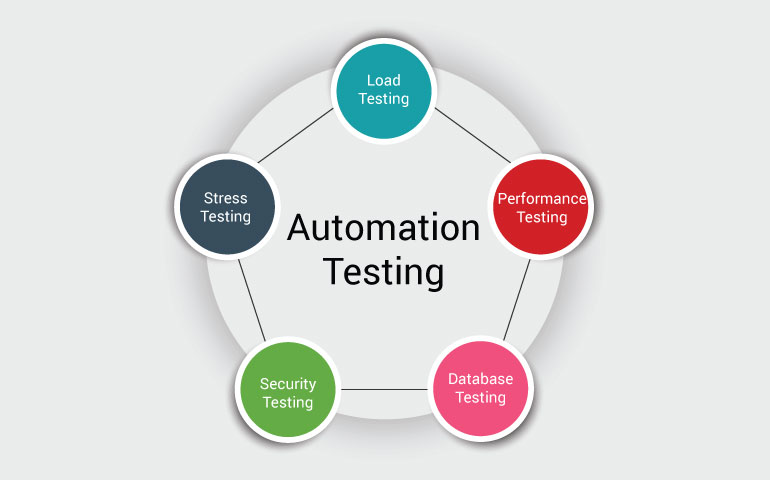Picking the Right Devices for Effective Automation Testing Solutions
Ensuring Success in Automation Testing: Secret Metrics, Difficulties, and Solutions Every QA Group Should Know
In the world of software application high quality guarantee, the landscape of automation screening is ever-evolving, demanding a careful strategy to make certain smooth procedures. The journey to grasping automation testing is paved with nuances that require a keen eye for monitoring, evaluation, and continual renovation. As the sector propels forward, the quest for optimal efficiency in automation screening stays a continuous quest, prompting QA groups to equip themselves with the knowledge and strategies vital for victory.
Value of Secret Metrics
Comprehending the relevance of crucial metrics is necessary for reviewing the efficiency and performance of automation screening procedures. Key metrics function as measurable procedures that give beneficial understandings right into numerous facets of the screening procedure, such as test insurance coverage, examination implementation time, flaw density, and examination case effectiveness. By assessing these metrics, QA groups can determine bottlenecks, inefficiencies, and areas for improvement within their automation testing structure.
One essential facet of essential metrics is their ability to track progression and check the overall health and wellness of the screening process (automation testing). They enable stakeholders to make informed choices based on data-driven understandings, which can bring about much more reliable testing methods and far better resource allowance. In addition, essential metrics can assist teams set sensible goals, determine the success of automation initiatives, and show the ROI of automation testing efforts

Common Challenges Faced
Challenges typically run into in automation testing processes can substantially influence the total performance and effectiveness of QA teams. Automation testing might not cover all facets of testing, such as functionality and individual experience screening, which still require hands-on intervention. Getting over these challenges requires proper planning, calculated test instance selection, robust upkeep processes, appropriate sources, and a clear understanding of the limitations of automation screening.
Reliable Solutions for Challenges
To attend to the barriers run into in automation screening, executing reliable solutions is necessary for enhancing the performance and performance of QA teams. One essential remedy is to buy robust training programs for QA teams to guarantee they have the needed skills to effectively use automation devices. Training can connect knowledge voids, boost understanding of automation frameworks, and improve scripting capabilities, eventually causing much more efficient examination production and implementation.
One more crucial service is to develop clear interaction networks within the QA team and with various other stakeholders, such as developers and project managers. Reliable communication aids in straightening expectations, sharing progress updates, and promptly dealing with concerns or obstacles that might try this out emerge during the automation screening process.

Tracking and Analysis Methods
Executing effective tracking and evaluation methods is crucial for guaranteeing the success and performance of automation testing procedures. Furthermore, examining examination results and metrics provides important understandings right into the quality of the software being examined and the efficiency of the testing strategy.
One secret strategy in monitoring and analysis is the usage of dashboards that settle pertinent metrics and KPIs in an aesthetically obtainable style. These dashboards use a detailed overview of test execution standing, examination coverage, issue patterns, and other critical information. Routinely examining and assessing these control panels can aid QA teams make notified decisions, prioritize jobs, and maximize screening initiatives.
Additionally, implementing automated informs and alerts based on predefined thresholds can enhance aggressive tracking and prompt treatment. By establishing informs for performance variances or test failures, teams can resolve issues without delay and avoid them from rising. On the whole, monitoring and analysis techniques play an essential function in ensuring the performance and success of automation testing efforts.
Continuous Renovation Approaches
Enhancing the effectiveness of automation testing processes necessitates the constant improvement of approaches and methods. Continuous enhancement approaches are crucial for QA groups to adjust to developing technologies and deliver top quality software program items. One vital method Learn More Here to improving automation testing procedures is to perform regular reviews and retrospectives. By analyzing past testing cycles, teams can determine traffic jams, inefficiencies, and locations for enhancement. Carrying out responses loops and integrating lessons learned into future screening structures can generate significant enhancements over time.

Conclusion
In verdict, it is crucial for QA teams to understand the key metrics, obstacles, and remedies in automation screening to make certain success. By meticulously checking and analyzing information, executing efficient solutions to typical difficulties, and constantly enhancing techniques, QA groups can maximize their screening processes and deliver top quality software products. Abiding by these methods will ultimately cause more efficient and efficient automation screening techniques.
By evaluating these metrics, QA teams can identify bottlenecks, ineffectiveness, and areas for renovation within their automation testing structure.
In addition, key metrics can assist teams established practical goals, gauge the success of automation initiatives, and show the ROI of automation screening efforts.
Obstacles generally experienced in automation testing processes can considerably impact the overall efficiency and performance of QA groups. Automation testing might not cover all aspects of screening, such as functionality and individual experience screening, which still call for browse around this site manual intervention.In conclusion, it is vital for QA teams to comprehend the essential metrics, challenges, and options in automation testing to ensure success.